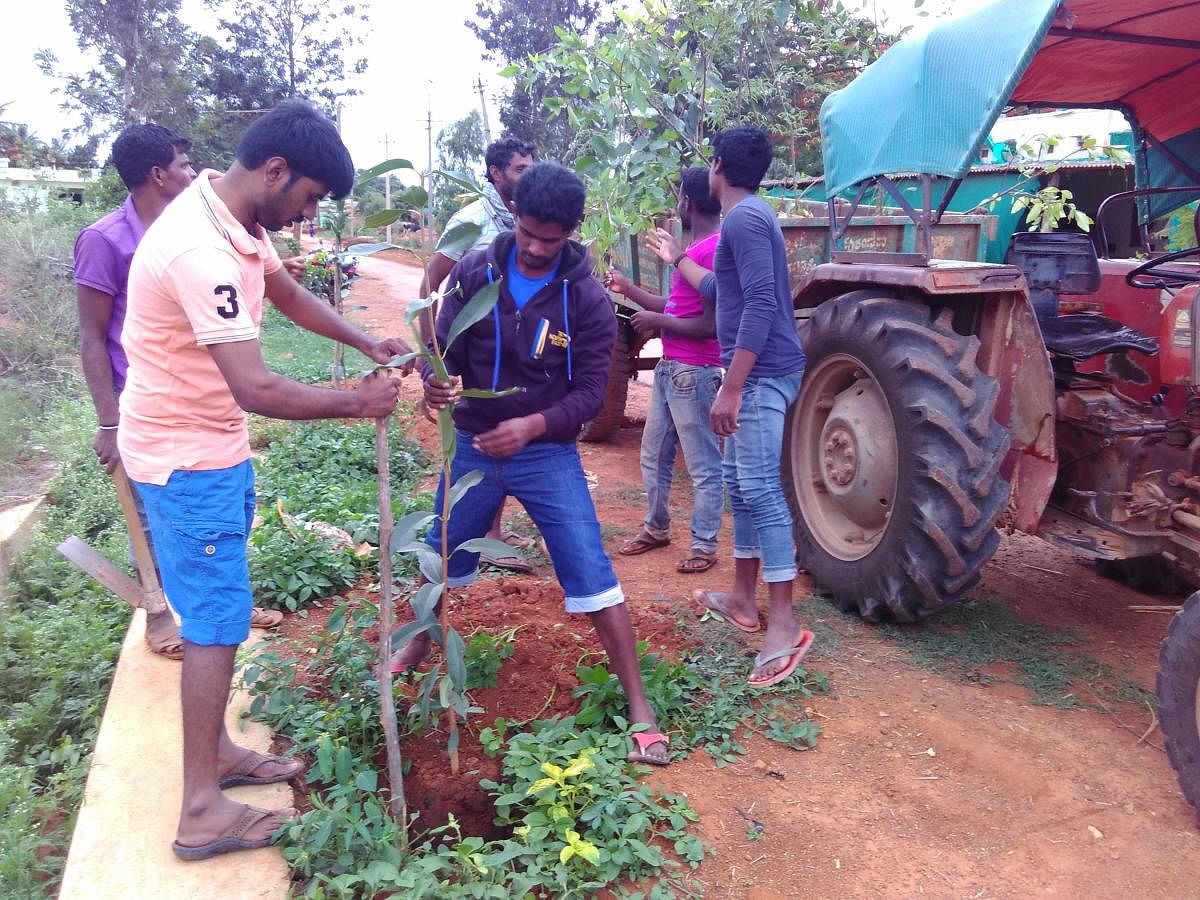
Hittalahalli village in Sidlaghatta taluk of Chikkaballapur district is drawing attention in the neighbourhood these days for community sanitation projects executed by a group of enthusiastic youths.
Not depending much on the government agencies, these youngsters have engaged in scripting a silent revolution. In just a couple of years, they have given a much-needed facelift to the village. They are championing the cause of a better, clean, sustainable village.
The village has about 163 houses with a population of around 800. Most residents are engaged in sericulture. It all began a few years ago when the villagers faced a problem. The government had allotted the village gomala (grazing land) for a burial ground. However, the government agencies had prepared an action plan for the construction of a bus depot using 25 gunta land from the burial ground. This did not go well with the residents. A few youths resisted the proposal. They submitted a memorandum to the officers concerned and staged protests. This finally yielded a required result and the land identified for the burial ground remained intact.
Series of activities
Motivated by the positive outcome, they decided to extend their efforts to other areas as well. They teamed up and planted saplings on both sides of the road. As this initiative was widely appreciated, they continued their community-oriented projects. There used to be mounds of waste and leftovers on roads and bylanes. They focused on community cleanliness drives and cleared the garbage.
Very soon, a large number of youths volunteered in the cleanliness drive. These efforts transformed the garbage-strewn corners, grounds, public places and bylanes in the village, giving the village a much-needed makeover.
Later, they fenced the burial ground to stop encroachments. They used funds under The Mahatma Gandhi National Rural Employment Guarantee Act and got a compound constructed across the burial ground. M H Muniraju, a villager who monitored works at the burial ground, persuaded villagers and got a kalyani constructed.
The kalyani holds the rainwater and recharges groundwater. Today, it is the primary source of drinking water for animals and birds in the neighbouring forests.
“Bellutti Santosh, a donor, helped us in planting the saplings on the two sides of the village main road. We spent from our pockets and watered the plants from a tanker,” recalls Muniraju. “Our efforts did not go a waste. The saplings are now growing and healthy,” he adds.
Later, they cleared the bushes and planted over 200 trees in the village government school campus and also on the road leading to the village lake. A few of them have painted the government school walls, while others have donated clothes and books. The group carries out cleanliness drives every Sunday.
They have decided to set a benchmark for cleanliness by making their village the cleanest in the region. They are engaging enterprising citizens of the village with this objective. In addition, there has been a ban on liquor sale in the village for the last 20 years.
H G Gopal Gowda, a progressive farmer, recalls that such efforts were carried out in the village five decades ago as well. “These youngsters have now resumed what their ancestors had discontinued,” he adds.
Zilla Panchayat chief executive officer, district-level officers and a team of Central Rural Development Department recently visited the village and expressed their appreciation. Buoyed by the encouragement from the officers and villagers, these youngsters have vowed to engage residents more effectively in cleaning and greening activities.